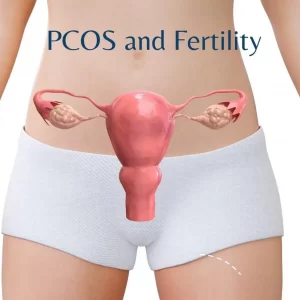How is gut health connected to fertility?
One of the unsung heroes in the miracle that is the human body, your gut does much more than merely digest, absorb and excrete food. It’s responsible for:
the proper function of your immune system, how you think and feels, how you synthesize and excrete hormones. Oh, and it influences your fertility too.
Quite simply, when your gut— which influences the health of everything in the body— isn’t functioning at its optimal level, it has a knock-on effect on other body systems, including fertility.

When it comes to fertility (in both women and men), your gut microbiome can make a significant difference. Indeed, new research has shown how poor gut health can cause an estrogen imbalance, which may lead to infertility issues ranging from endometriosis and polycystic ovary syndrome to testicular dysfunction.
Research on the gut-fertility connection
It might sound hard to believe, but gut health and fertility are inextricably linked. And that’s why couples looking to conceive should always focus their attention on optimising their gut health.
A growing body of evidence has confirmed the gut-fertility connection and its importance for our wellbeing. These include the following:-
- Women with recurrent pregnancy loss were found to have abnormal gut permeability (aka leaky
gut), which has been shown to contribute to inflammatory reactions in the body¹. The researchers hypothesised that the inflammatory reaction caused by leaky gut may be contributing to miscarriage pathogenesis. - The gut microbiome is responsible for converting bound estrogen to free, active estrogen via
the enzyme B-glucuronidase. According to a recent review, without a healthy microbiome, estrogen metabolism and function becomes impaired and can lead to a number of health consequences including endometriosis, PCOS, endometrial hyperplasia and infertility². Authors of this review concluded that treating the gut microbiome to modulate estrogen levels should be considered as a new future treatment for estrogen-mediated diseases including infertility. - A meta-analysis (a statistical analysis that combines the results of multiple scientific studies) completed in 2016 found that women with unexplained infertility have x 3.5 higher odds of having Celiac Disease³. Furthermore, it has been estimated that as much as 6% of women struggling with unexplained infertility actually have undiagnosed Celiac Disease⁴.
Gut health, specifically the gut microbiome, plays a vital role in immune function. When our immune system isn’t working optimally due to poor gut health, our bodies may enter a state of chronic inflammation. This, in turn, can result in recurrent pregnancy loss. Chronic inflammation may also cause decreased progesterone levels leading to implantation failure⁵, the development of autoimmune processes impacting fertility⁶, and the development of anti-sperm antibodies preventing fertilisation. Thankfully, probiotic supplementation to support gut health has been shown to decrease chronic inflammation and improve immune function⁷.
The importance of estrogen for fertility
Estrogen has always been considered a female dominant hormone for reproductive health, but this hormone actually pays a key role in fertility in both men and women.
For women, estrogen is needed for proper ovulation and thickening of the uterine wall for pregnancy. It’s important that estrogen levels are neither too high nor too low, though.
Excess estrogen, for instance, may cause irregular periods and can prevent ovulating, thereby resulting in infertility. Estrogen dominance has also been linked to infertility issues in women such as endometriosis and polycystic ovary syndrome.
Estrogen deficiency, meanwhile, can also cause amenorrhea (an abnormal absence of menstruation), which leads to anovulation. Disorders of ovulation account for approximately 30% of female infertility and present mainly with irregular periods or amenorrhea.
The importance of estrogen for men’s sexual health is equally significant, impacting on multiple organs and tissue by affecting their reproductive system in a number of ways.
A deficit or surplus of estrogen can, for example, hinder the male libido (sex drive), with obvious implications for fertility. Meanwhile, spermatogenesis, an inappropriate increase in estradiol (an estrogen steroid hormone) has been shown to lead to a decrease in sperm production, while too little estrogen has been shown to have a causative effect with erectile dysfunction
Hormones in your body are always in a careful balancing act. If one of your organs is not functioning properly, everything is thrown off-balance.
Your gut, the ‘forgotten organ’ or ‘second brain’ is a key regulator in circulating and eliminating estrogen, which is why it’s so important to focus on gut health when it comes to fertility.
I am recommending Nua Fertility supplements to more of my clients, simply because I believe this is an excellent way of supporting gut AND fertility health for pre-conception. Ask me today how to get yours!
- https://www.ncbi.nlm.nih.gov/pubmed/?term=recurrent+pregnancy+loss+leaky+gut
- https://www.ncbi.nlm.nih.gov/pubmed/28778332
- https://www.ncbi.nlm.nih.gov/pubmed/25564410
- https://www.ncbi.nlm.nih.gov/pmc/articles/PMC4216449/
- https://www.ncbi.nlm.nih.gov/pmc/articles/PMC4137456/
- https://www.ncbi.nlm.nih.gov/pmc/articles/PMC4845518/
- https://www.ncbi.nlm.nih.gov/pmc/articles/PMC2701523/


















